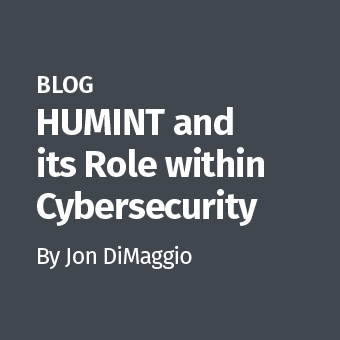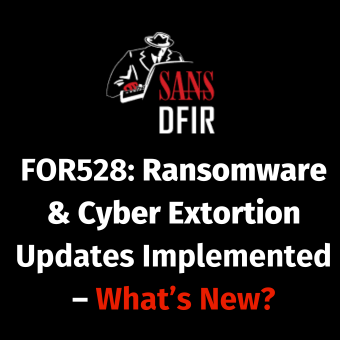Given the ongoing investigation at Fannie Mae, it seems appropriate to start waxing philosophical a bit on some recent evolutionary changes in the digital forensics world. While it is true a majority of forensics cases revolve around suspected wrongdoing involving a computer (e.g. fraud), using computers and code as weapons themselves crosses into the realm of information warfare. Yet forensic analysts and incident response experts will have to continue to straddle both of these realms in the new millennium, as both fields continue to evolve and in many respects, converge.
I have seen the devastating results of logic bomb "detonation" up close, and I can assure everyone that carefully prepared information weapons are far more damaging than almost any single Trojan, spyware infection, phishing attack, or virus outbreak one might encounter. This makes it all the more important for our community to be able to understand, identify, isolate, and yes, in some cases maybe even disarm such automatons. In most cases, however, our role will probably be to respond, assess, and report on the damage and determine its cause. Before anyone dismisses this as a fancy "blue sky" exercise or pontification of FUD, simply consider the case of Roger Duronio of New Jersey. In a stunning act of malicious insider sabotage and with both vengeful and financial motives, Roger brought a financial behemoth to its knees on March 4th, 2002.
As those were my days in private investigation, I had the humbling opportunity to be intimately involved in this case. The situation was eerily similar to the Fannie Mae near-disaster, the only difference being that Roger's device detonated on time and caused unbelievable financial losses in the blink of an eye (around 3 million dollars to regain functionality), followed by incidental losses over the course of years which were never reported by UBS/PW (I'm sure some folks here could guesstimate the final bill). Forensic analysts from multiple agencies and institutions became involved and my task was to review the weight of the state's pending case as well as Roger's potential defense.
I had a chance to review the source code of Roger's logic bomb and hard drives affected by it. The weapon was simple and elegant (a KISS practitioner would have been proud), contained around 50 lines of C code, and it had the benefit of a flawless delivery system (rsync or something similar) to distribute it. The code's simplicity allowed one to clearly see why it was a dangerous: a single, lethal system command (rm) wrapped tightly, like a digital pipe bomb, in a short series of nested loops. With the standard recursive option set (-r) and the failsafe disabled (-f), it was pointed at the UNIX root ("/"), the heart of the file system. With significantly privileged access to a vast majority of the UBS Paine Webber financial network, Roger used a series of work and personal systems to distribute and then hide several thousand copies of his sabotage device on a cold winter's night in 2001, just before the New Year, while most of the UBS/PW IT staff was out enjoying the company holidays. For months the nested loops on these devices cycled, first through a month counter, a day counter, an hour counter, and finally a minute counter, ever closer to the 3/4/02 9:30am ET trigger date when those thousands of payloads executed simultaneously. The effect to UBS/PW was, borrowing the words of General Curtis LeMay, to "bomb them into the Stone Age". For more than a day UBS Paine Webber, a financial giant without the aid of most of its UNIX back end infrastructure, was forced to trade and operate using paper and pen. While I was never at the digital "Ground Zero" at UBS/PW, I was asked to look at the "bodies" and the remnants of the discharged "weapon". Ultimately I was asked to look at state's evidence pointing to Duronio, which ultimately led to his conviction in 2006. Even after the trial, and probably to this very day, UBS/PW and its spin-offs continue to realize business losses (i.e. dollars) from the event in 2002 due to unavailable data and unrestored systems. Interestingly, here's what one of Duronio's defense attorneys had to say:
"Chris Adams, Duronio's defense attorney and a partner at Walder, Hayden & Brogan in Roseland, N.J., says his client isn't to blame for what he called the "unsophisticated and sophomoric" code that, he added, was most likely planted as a prank."
While IANAL, I think can safely say to Mr. Adams that YANAFE (You Are Not A Forensics Expert). The code was neither unsophisticated nor sophomoric and was indeed clearly designed for an explicit purpose: to systematically and recursively destroy the filesystems of thousands of UNIX big iron servers precisely at the start of stock exchange trading in New York on March 4th 2002. Mr. Duronio's defense may have had more success were it not for the fact that he placed orders for over $20,000 shorting UBS/PW stock, eleven days prior to the attack. While we examine the logic bomb, our brothers in arms in forensic accounting and securities investigation would tell you this is the real smoking gun. The US Attorney for New Jersey agreed that both items were enough to proceed to a grand jury, and rest as they say is?precedent.
The Fannie Mae case is the exception and hardly the rule, as others have noted. A vast majority of us will probably end up cleaning up the bodies and examining discharged ordnance rather than catching this kind of thing. Police ballistics laboratories are never wanting of bullets or handguns to examine, and I imagine we are all on the verge of a similar paradigm shift in the digital realm. The challenge remains with IT and security organizations to limit privilege and carefully control access to systems and resources in an efficient yet compartmentalized fashion. If the events of 9/11 illustrated the potential for a small band of fighters to knock out a disproportionally large infrastructure in 21st century America, the Roger Duronio case is without a doubt the corollary for our field. Several thousand victims snuffed out in both cases due to a failure of proactive due diligence and in the chaos of the ensuing reactive response. This is the fate that Fannie Mae avoided, apparently by pure chance. Few cautionary tales are as good as this one.
Hal's post on change controls illustrates one way we can potentially catch insider malicious code, but sadly when the elements of poorly controlled access and authorization factor in, and the crucial security element of least privilege is ignored, the security game is already over and you've lost. The most damaging information saboteurs already know the internals of your networks and ways to circumvent business processes that aren't truly secure. Even change controls cannot stop the rogue system administrator with privileged access to "everything", as in the case with Roger, if other failsafe methods aren't in use. This is asymmetric information warfare at its clearest: one, small threat who can still reach the heel of Achilles.
To end, I'll give a few lessons that the bloody tale of Roger Duronio impressed upon a once more naive analyst:
- Know how IT privileges (access and authorization) are assigned and revoked in your organization. Be able to audit and review this easily.
- Least privilege is not a "nice to have" but instead should be the foundation of all system access employees are granted. People must start with no privileges and be assigned the ones they need to do their immediate job, rather than be given full access in the name of convenience. Even senior UNIX administrators like Mr. Duronio do not need immediate root access to 2000 of your most critical systems.
- Ensure your organization is able to revoke IT privileges in a push-button, "nuclear option" fashion, because such privileges are not only administrative matter but a tactical one as well. It is far better to revoke and re-enable than to wait and regret the decision to terminate access.
- Even if all of these elements are assured (and I can't stress this enough), take threats made in the office seriously.
Whether it is an employee joking to come in on Monday with an AK-47 or threatening to crash IT systems, do not take co-worker threats in the workplace lightly. Duronio became an instant suspect after the event because of witnesses who testified that he was highly disgruntled and disruptive at UBS/PW before finally resigning a few months prior to the attack (but not before planting his Doomsday Machine). When we take threats lightly from people who are already inside our perimeter, we are often one single point of failure away from events like 9/11, Columbine, and UBS/PW.
Mike Worman, GCFA Gold #124, GCIA Gold #282, is an incident response, forensics, and information security subject matter expert for a international telecommunications carrier. He holds a BS in Computer Systems Engineering from the University of Massachusetts, an MS in Information Assurance from Norwich University, and is CISSP-certified.





